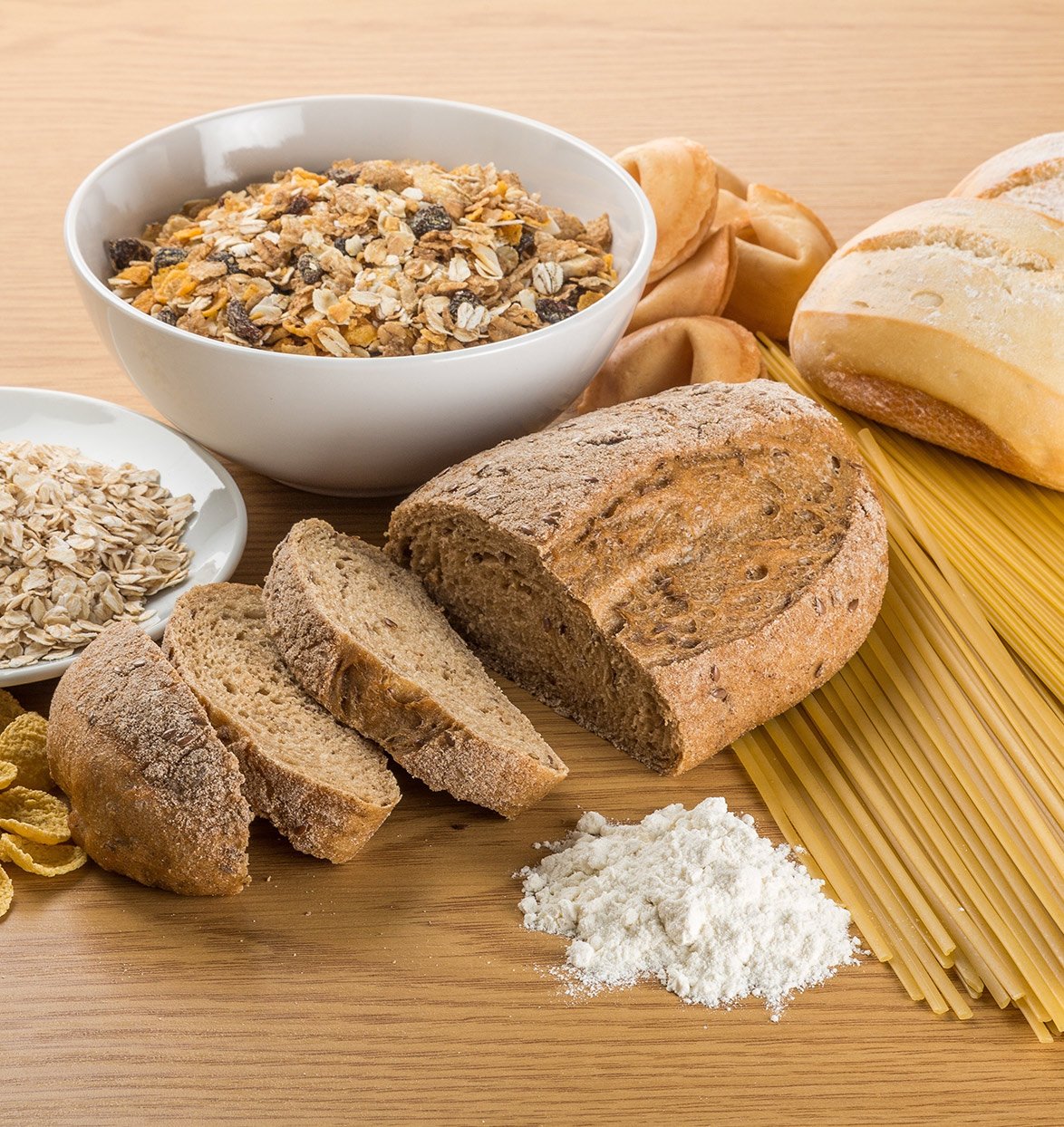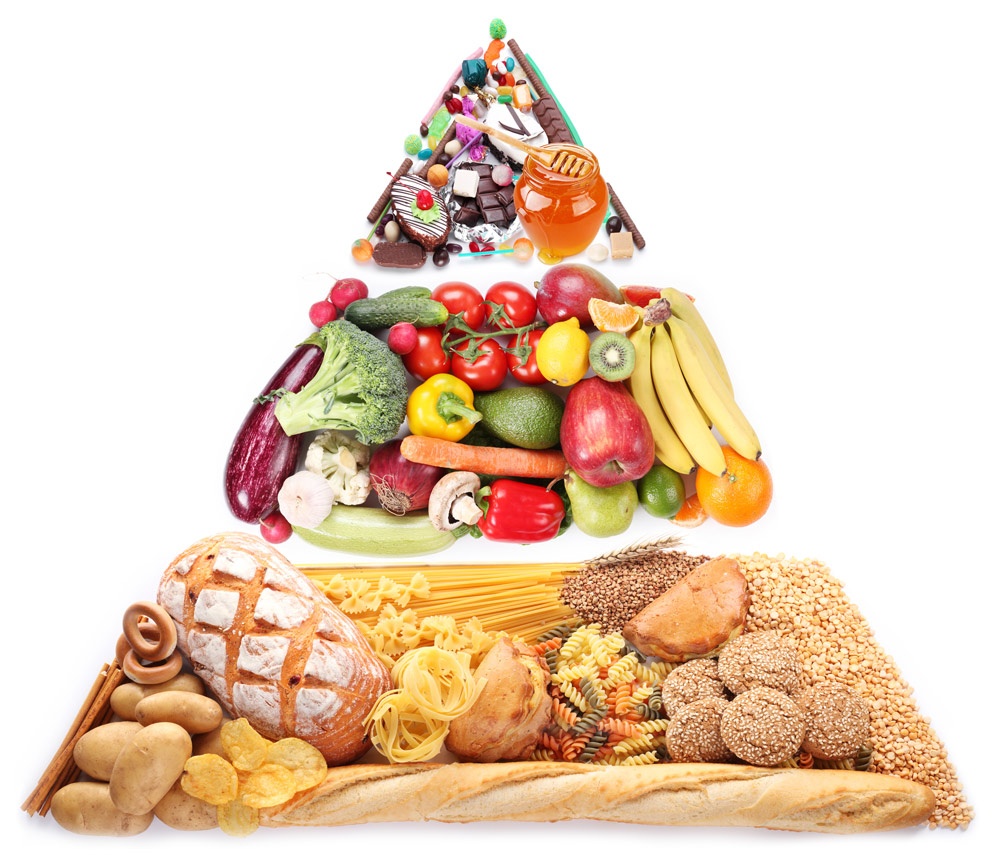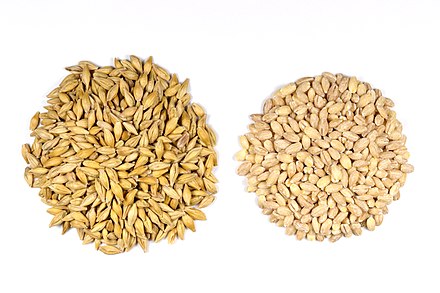We Need to Talk About Gluten Sensitivity
Gluten is a family of proteins found in wheat, rye, oats and barley that can cause negative health effects in those who are sensitive. This helpful explainer breaks down everything you need to know about gluten and gluten sensitivity, including its history, biological mechanics, related health disorders and symptoms, and much more.
Even the smallest serving of gluten can lead to devastating bouts of gastrointestinal inflammation in those afflicted with celiac disease (CD). Fortunately, a standard diagnostic process has been in place for identifying CD for more than 30 years. Recently, however, there’s been a significant increase in reported instances of gluten sensitivity presenting in patients who test negative for CD, prompting scientists to more closely study the effects of gluten on the human body.
To date, research results have yielded some eye-opening revelations regarding gluten sensitivity. Yet in true scientific fashion, these also leave us with new gluten mysteries to explore.
Consider this the ultimate guide to understanding gluten and gluten sensitivity.

What Exactly Is Gluten?
Gluten Is Ingrained in Western Culture
Gluten — a catch-all name for the proteins found in wheat, rye, barley and oats — has a strong presence within the most substantial part of the traditional food pyramid (the bottom).
For those who haven’t looked at a food pyramid recently, the broad, bottom-tier of the pyramid is where carbohydrate-rich foods such as bread, cereals, and pasta reside, all of which are dietary staples of Western cultures, and all of which contain gluten. It’s no surprise, then, that gluten is among the most heavily consumed proteins on earth.

Here’s the Kicker
Celiac disease and non-celiac-related gluten sensitivities are on the rise.
According to certified clinical nutritionist (CCN) Tom O’Bryan, author of The Autoimmune Fix: How to Stop the Hidden Autoimmune Damage That Keeps You Sick, Fat, and Tired Before It Turns Into Disease, researchers have discovered that the frequency of confirmed celiac disease has doubled every 15 years.
One plausible explanation acknowledges periodic improvements in screening practices that have lead to more accurate diagnoses, but there’s still much more to unpack here. The remainder lies within the recent onslaught of research surrounding gluten sensitivity unmistakably implicating our beloved wheat products for crimes against immunity.
Gluten: Then & Now
“But it’s always been this way!” vs. “Our food has been genetically altered!”
THEN
“Humans have been eating gluten for at least 10,000 years.” This is the talking point that gluten apologists lean on most often when denouncing the newly heightened perception of gluten sensitivity as an imminent health risk, even to those without confirmed CD.
NOW
In their books Wheat Belly and Grain Brain, New York Times best-selling authors William Davis and David Perlmutter, respectively, both point to genetic modification of wheat as the catalyzing event for the transmutation of gluten into the ultimate dietary villain.
Subsequently, both authors also tout a gluten-free diet as a panacea for autoimmunity disorders, cognitive degeneration, digestive discomfort, and more.
“Quality over quantity” vs. “Hurry up and sell”
THEN
Once upon a time, it was commonplace to make bread from sprouted and fermented grains, and to use slow-rise yeast for leavening. Sprouted grains are more nutrient-rich than processed grains, and fermented foods are notorious for promoting a healthy gut microbiome.
NOW
According to Davis and Perlmutter, not only are the grains themselves less gut-friendly than the grains of the past, but the ways we currently process grains have changed so fundamentally that we cannot rule out the possibility that the newer processes could be contributing to the increasing rates of gluten sensitivity. Today’s bread-making is sped up to keep pace with consumer habits with help from fast-rise yeast, and by forgoing the once-ritual sprouting and fermenting practices, altogether.
Enemy of the Endocrine
The endocrine system is in charge of firing hormones at the right times. Visceral belly fat can act as an endocrine gland, boosting estrogen levels in men and women alike. Endocrinologists and gastroenterologists should both be on the lookout for potential celiac disease cases because celiac often presents silently, or with non-digestive-related symptoms, and occurs at higher rates in patients with insulin-dependent diabetes mellitus or autoimmune thyroid disease.
Celiac disease often accompanies other endocrine disorders, such as adrenal gland disease, hair loss, and hypophysitis (which is a pituitary issue), further strengthening the implication that gluten sensitivity and hormonal imbalance go together.
There’s a thin line between inflammation and chronic inflammation.
When those afflicted with gluten sensitivities ingest wheat products, their bodies experience extreme states of inflammation. This is an immune response — the body’s way of defending itself.
When Immune Forces Backfire
When discussing immunity, we’re referring to the bodily processes implemented to defend itself against infection, inflammation, environmental toxins, and more. Autoimmunity, on the other hand, entails a betrayal of these natural processes. What we’re witnessing when someone develops an autoimmune disorder is an individual’s body actually attacking itself.
What’s in an Acronym?
How to Differentiate Between CD, NCGS & IBS
Celiac Disease (CD)
Hereditary and environmental factors determine whether a person is affected by this chronic inflammatory condition of the small intestine. CD is marked by a permanent intolerance to gluten—the protein found in wheat, barley and rye. Each time a CD-positive person consumes gluten, an immune response is triggered. The result is inflammation. In CD patients, continued consumption of inflammatory foods will damage the lining of the small intestine, preventing absorption of various nutrients.
Non-Celiac Gluten Sensitivity (NCGS)
For a long time, patients complaining of perceived gluten sensitivity, but who undoubtedly did not suffer from celiac disease, were widely dismissed by the medical community, largely because it had never been a pervasive issue before. The best anyone could do was to guess. In recent years, the NCGS diagnosis has gained traction and legitimacy through research.
Irritable Bowel Syndrome (IBS)
This intestinal disorder causes abdominal pain, bloating, gas, and irregular bowel movements. Clinically speaking, the common complaints associated with IBS and those associated with NCGS are very similar. Most people suffering from NCGS are also tagged with IBS. Vice versa, gluten-sensitive IBS patients make up a substantial subset of all IBS patients, too.
Symptoms of Gluten Sensitivity
In Children
Gluten intolerance doesn’t present the same with everyone, especially in the case of celiac disease. With CD, children will typically experience digestive symptoms, including:
- Vomiting
- Diarrhea
- Poor Appetite
- Constipation
Non-digestive symptoms of gluten intolerance that may present in children are:
- Failure to Thrive
- Muscle Wasting
- Irritability
- Short Stature
- Delayed Puberty
- Neurological Symptoms, including Attention-Deficit/Hyperactivity Disorder (ADHD), Learning Disabilities, Headaches, Lack of Muscle Coordination and Seizures
In Adults
Adults may experience the above symptoms, too, but this is less common. Just one-third of adults with CD experience diarrhea as a result of the disease. More than half of adults with CD present one or more of the following non-digestive symptoms, instead:
- Anemia
- Loss of Bone Density (Osteoporosis) or Softening of Bone (Osteomalacia)
- Itchy Skin Rash (Dermatitis Herpetiformis)
- Damaged Teeth
- Mouth Ulcers
- Headaches
- Fatigue
- Problems with Balance
- Cognitive Impairment
- Joint Pain
- Acid Reflux/Heartburn
Glutenous Foods
Going gluten-free entails cutting any foods that list wheat, barley, rye, or any of their byproducts as ingredients.

Wheat is commonly found in:
- Breads
- Baked goods
- Soups
- Pasta
- Cereals
- Sauces
- Salad Dressings
Barley can be found in:
- Malt
- Food Coloring
- Soups
- Beer
- Brewer’s Yeast
And last but certainly not yeast... (see, again what we did there?!)
Rye can be found in:
- Rye Bread (Pumpernickel)
- Rye Beer
- Cereals
Other common foods that contain gluten, or that may contain gluten, are:
- French Fries (Batter may Contain Wheat Flour)
- Potato Chips (Seasonings may Contain Malt Vinegar or Wheat Starch)
- Processed Deli Meat
- Candy
- Non-corn-based Tortilla Chips
- Brown Rice Syrup (Sometimes Made with Barley Enzymes)
- Seitan (Wheat Gluten)
- Soy Sauce
- Anything Else that Uses “Wheat Flour” as an Ingredient
Note: Eggs are gluten-free, but some restaurants mix gluten-containing pancake batter into their scrambled eggs/omelets.
When in doubt, verify your food’s gluten status by reading the label, or checking with the manufacturer/kitchen staff.
Gluten-Free Crash Course
In his book Grain Brain, author David Perlmutter pontificates on the growth rate of the gluten-free market, stating: “By the end of 2016, sales of gluten-free products could top $15 billion—a number that is more than double what it was in 2011.”
Well, 2016 has come and gone, and the numbers are in. According to statistics compiled by market research firm Grand View Research, the global gluten-free products market was valued at USD 14.94 billion in 2016, just barely short of Perlmutter’s prediction. What’s more? It boasts an expected compound annual growth rate of 9.2% from 2020 to 2027.
There’s no two ways about it: The increasing rate of celiac disease cases and other forms of gluten sensitivity has changed the way consumers are eating. Despite perceived widespread adoration of wheat-based goodies, the general public seems to be gradually accepting a massive shift away from gluten.
Ready to climb aboard the gluten-free train? Here are some simple dietary tips to help get you started.
Eat More Gluten-Free Foods
|
Watch Your Micronutrients
When cutting gluten, you may inadvertently eliminate certain desirable micronutrients from your diet. For instance, vitamin B1, potassium, magnesium, and fiber are commonly found in whole grains. To avoid deficiencies, you could compensate with vitamin and mineral supplements containing each of these nutrients, or you could just replace grains with other whole foods containing the same nutrients, such as those included on the following chart:
| Nutrtient | Whole Foods Containing the Nutrient |
| Vitamin B1 | Spinach, Poultry, & Yogurt |
| Potassium | Avocados & Beets |
| Magnesium | Beans, Nuts, & Leafy Green Vegetables |
| Fiber | Raspberries (more grams of fiber per cup than bran flakes!) |
Reading suggestions for continued learning:
- Wheat Belly, William Davis
- Grain Brain, David Perlmutter
- The Autoimmune Fix: How to Stop the Hidden Autoimmune Damage That Keeps You Sick, Fat, and Tired Before It Turns Into Disease, Tom O’Bryan
Amazon’s top-selling selling gluten-free cookbooks:
- True Roots: A Mindful Kitchen with More Than 100 Recipes Free of Gluten, Dairy, and Refined Sugar, Kristin Cavallari
- Made Whole: More Than 145 Anti-
lnflammatory Keto-Paleo Recipes to Nourish You from the Inside Out, CristinaCurp - Quick & Easy Ketogenic Cooking: Meal Plans and
Time Saving Paleo Recipes to Inspire Health and Shed Weight, Maria Emmerich - Danielle Walker's Against All Grain: Meals Made Simple: Gluten-Free, Dairy-Free, and Paleo Recipes to Make
Anytime , Danielle Walker
Resources
- A Brief History of Celiac Disease
- Celiac Disease and Nonceliac Gluten Sensitivity: A Review.
- The Autoimmune Fix: How to Stop the Hidden Autoimmune Damage That Keeps You Sick, Fat, and Tired Before It Turns Into Disease
- Endocrinological Disorders and Celiac Disease
- Celiac Disease, Inflammation and Oxidative Damage: A Nutrigenetic Approach
- Gluten Sensitivity Put to the Test
- Diagnosis of Non-Celiac Gluten Sensitivity (NCGS): The Salerno Experts’ Criteria
- New study links protein in wheat to the inflammation of chronic health conditions
- Grain Brain: The Surprising Truth About Wheat, Carbs, and Sugar - Your Brain's Silent Killers
- Gluten-Free Products Market Analysis By Product (Bakery, Dairy Alternatives, Desserts & Ice-Creams, Prepared Foods, Pasta & Rice), By Distribution (Grocery Stores, Mass Merchandiser, Club Stores), And Segment Forecasts, 2018 - 2025


.jpg?width=1920&height=445&name=LICDH_Title_Inner1%20(2).jpg)






